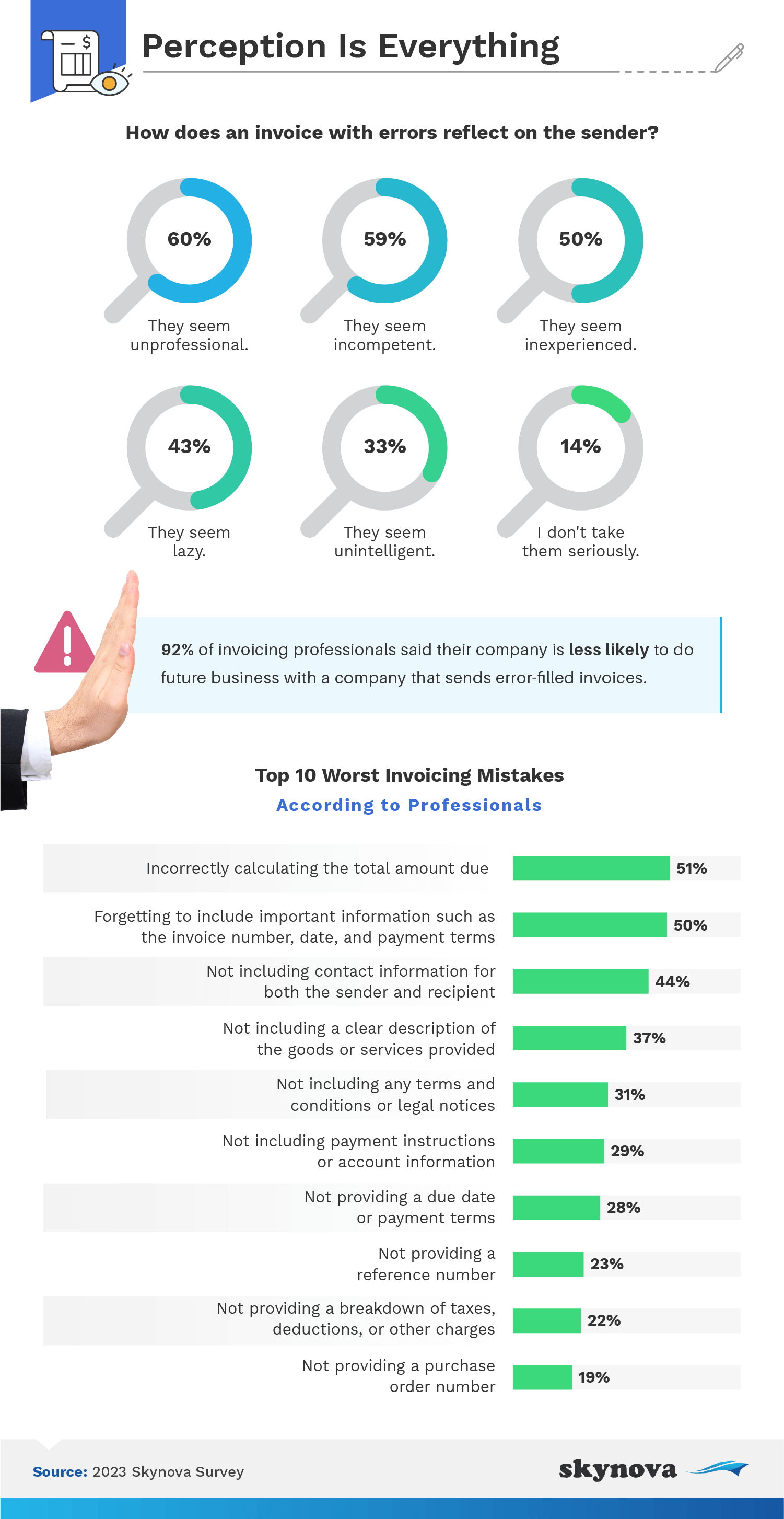
|
New to invoicing? With all that needs to be included, it can seem overwhelming. To alleviate some of the stress, we've gathered tips from experienced professionals across top industries about the most important aspects of a proper invoice, what's at stake if they're overlooked, and how to ensure you get it right. Read on to find out how to nail your invoicing so your clients look forward to working with you again.
First, let's look at the most common pain points when it comes to invoicing and how much the top invoicing issues have cost companies.

On average, companies have lost $492 due to invoicing issues. More than half of the American professionals we surveyed said their primary struggle with invoicing is knowing what information to include (51%). Respondents working in health care were the most likely to have this issue. Other top invoicing struggles reported overall included:
With all this confusion, many young professionals have turned to their parents. Of our respondents, nearly all Gen Zers (93%) and most millennials (82%) had, at some point, asked their parents to do their invoicing for them. They've mostly had issues with sending invoices and knowing what to include, whereas the older generations — Gen X and baby boomers — struggled more with tracking payments.
Everyone makes mistakes, but invoice errors can be costly. What are the worst invoicing mistakes and their consequences?

Half of our respondents said the most consequential invoice mistakes are miscalculating the amount due and leaving out key information like the invoice number, date, and payment terms. Other major invoicing errors included:
So, what can happen if your invoices have errors? Almost every employee we surveyed (92%) said that when they do business with a company that sends over error-filled invoices, they're less likely to do business with them in the future. That may be reasonable, considering how these missteps can reflect on the sender. Respondents said these mistakes make them seem:
But not to worry. We've got some tips to help you avoid this.
Next, we asked professionals with plenty of invoicing experience to share their tips for success and avoiding common pitfalls.

These seasoned professionals said that from the time they started invoicing, it took them about seven months to feel confident in their abilities. But after learning from experience, their No. 1 suggestion for improving invoicing was to use paid software. Invoicing software can take a lot of human error out of the equation while saving time and resources. Their other top tips included:
You'll notice that some of these solutions cost more than others, but remember: You get what you pay for. Free software often comes with a catch, such as a lack of customer support, security risks, and poor usability — all of which can cost you in the long run.
Although there are many important reasons to get your invoicing on track, it doesn't have to be difficult or even take very long to get there. Start now, and in about half a year, it's likely that you'll be far less worried about what is or isn't included on your invoices, and managing them will come much more easily. Plus, you can rest easy knowing that your clients perceive you as thorough, professional, and experienced.
Invoicing has never been simpler. With our templates and software, you can make sure the right information is sent and received every time.
Skynova surveyed 1,003 Americans about their experiences with invoicing. Of these, 670 worked in the information and technology industry, 120 worked in health care, 51 worked in retail, 50 worked in education, 34 worked in real estate, 20 worked in hospitality/food and beverage, six worked in government, and 52 worked in other various industries. The sample consisted of 60 baby boomers, 169 Gen Xers, 461 millennials, and 313 Gen Zers. Survey respondents were chosen because, at the time, they dealt with invoices as a large part of their job.
If you know a professional who could use some of these invoicing tips, please share these findings with them. We just ask that you use them only for non-commercial purposes and link back to this study.